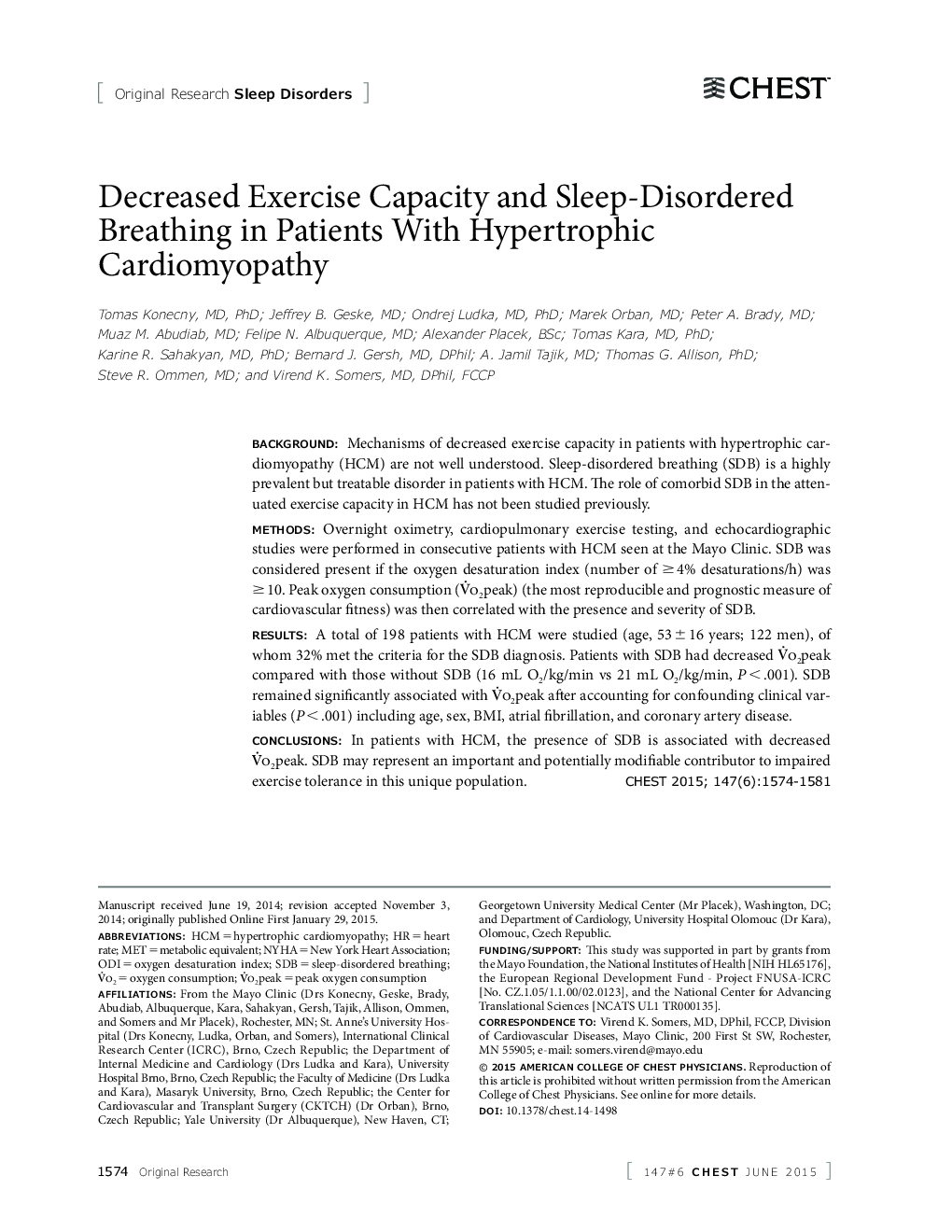| Article ID | Journal | Published Year | Pages | File Type |
|---|---|---|---|---|
| 2900078 | Chest | 2015 | 8 Pages |
BACKGROUNDMechanisms of decreased exercise capacity in patients with hypertrophic cardiomyopathy (HCM) are not well understood. Sleep-disordered breathing (SDB) is a highly prevalent but treatable disorder in patients with HCM. The role of comorbid SDB in the attenuated exercise capacity in HCM has not been studied previously.METHODSOvernight oximetry, cardiopulmonary exercise testing, and echocardiographic studies were performed in consecutive patients with HCM seen at the Mayo Clinic. SDB was considered present if the oxygen desaturation index (number of ≥ 4' desaturations/h) was ≥ 10. Peak oxygen consumption ( V.o2peak) (the most reproducible and prognostic measure of cardiovascular fitness) was then correlated with the presence and severity of SDB.RESULTSA total of 198 patients with HCM were studied (age, 53 ± 16 years; 122 men), of whom 32' met the criteria for the SDB diagnosis. Patients with SDB had decreased V.o2peak compared with those without SDB (16 mL O2/kg/min vs 21 mL O2/kg/min, P < .001). SDB remained significantly associated with V.o2peak after accounting for confounding clinical variables (P < .001) including age, sex, BMI, atrial fibrillation, and coronary artery disease.CONCLUSIONSIn patients with HCM, the presence of SDB is associated with decreased V.o2peak. SDB may represent an important and potentially modifiable contributor to impaired exercise tolerance in this unique population.
